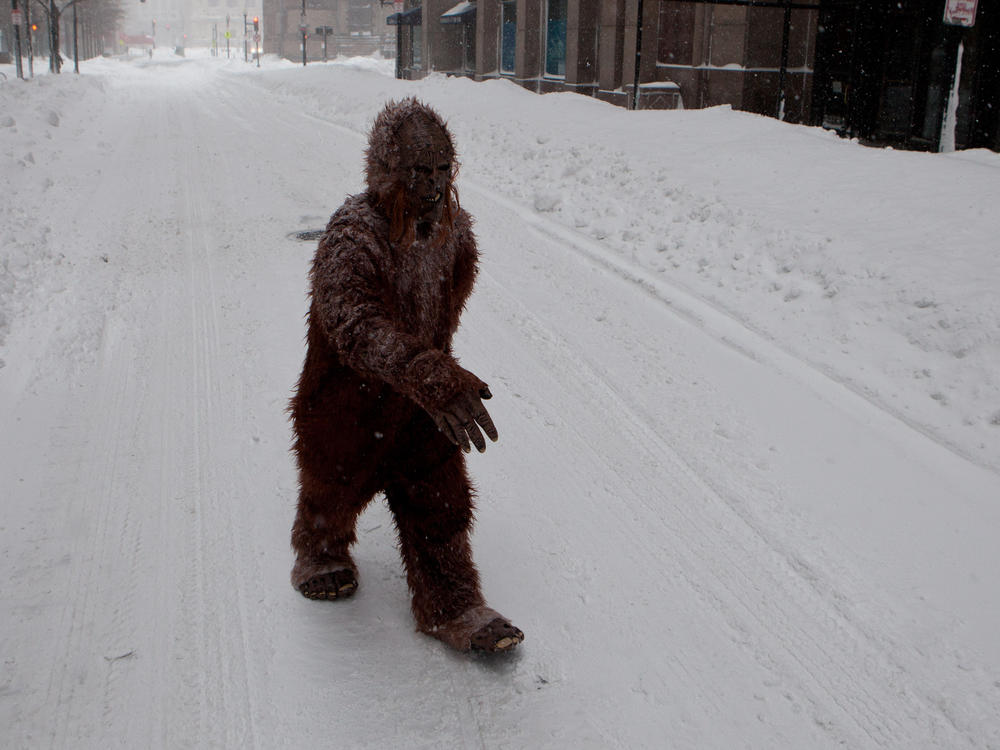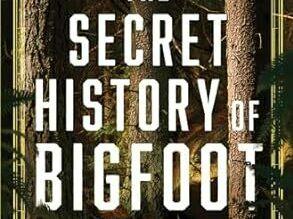Section Branding
Header Content
Is Bigfoot real? A new book dives deep into the legend
Primary Content
My obsession with literature exploded in my early teens. Back then, my diet consisted mostly of whatever classics I could find, novels by Jules Verne, poetry by Mario Benedetti, and a lot of horror novels by Stephen King, Richard Laymon, and Bentley Little — all of which I was arguably way too young to be reading.
Then I discovered cryptozoology and went down a rabbit hole, consuming anything I could find about cryptids like Nessie, mokèlé-mbèmbé, and the chupacabras as well as animals that had jumped from cryptozoology to the pages of science books — the giant squid (Architeuthis dux) and the coelacanth. My favorite cryptid? Bigfoot. Books, documentaries shot with a $12 budget, shaky footage online; I couldn't get enough. I wanted to know more about it, but also about the folks who swore it was real, the people who had seen it, the devout researchers who spent countless nights out in the middle of woods looking for the famous creature I'd seen in the Patterson-Gimlin film (which is, along with the Zapruder film, probably one of the most scrutinized pieces of footage in history).
When I heard John O'Connor's The Secret History of Bigfoot: Field Notes on a North American Monster was coming, I knew I had to read it. My expectations were somewhere close to the exosphere — unfair, I know — but O'Connor surpassed all of them.
If you're looking for a book that proves the existence of Bigfoot, look elsewhere. If you want a book that's all about discrediting evidence and making those who believe in Bigfoot look like mumbling fools wearing tinfoil hats, also look elsewhere. The Secret History of Bigfoot is a smart, engaging, incredibly informative, hilarious, and wonderfully immersive journey not only into the history of Bigfoot in North America and the culture around but also a deep, honest, heartfelt look at the people who obsess about, the meaning of its myth's lingering appeal, and the psychology behind it.
O'Connor, a journalist and self-diagnosed skeptic, is fascinated by Bigfoot, so he spent a year travelling around the country, talking to those who live for Sasquatch, and tracking Bigfoot in the untamed terrain of the Pacific Northwest. The book would've been interesting if O'Connor merely transcribed his interviews with those looking for Bigfoot. But his research and interviews also include psychologists and scientists — and he delves deep into everything from history and philosophy to politics and the flawed nature of memory. The result is one of the most compelling nonfiction books you'll read this year.
There are two elements that make this is fantastic read. The first is O'Connor's voice. As knowledgeable as he is funny and as well-read as he is self-deprecating, O'Connor quickly turns into the perfect narrator for this adventure. His quest for understanding is powerful, and he presents every person in this book with the same gravitas. Yes, this is a hilarious narrative, but also a very serious and enlightening one in which O'Connor prefers to make fun of himself instead of making fun of others (except for folks who are convinced the election was stolen).
The second element is the breadth and scope of this book. This is about Bigfoot, about its history and the people trying to find him, but O'Connor somehow manages to take the discussion into unexpected places without ever straying far from the creature at the core of the narrative. Occam's razor, Heisenberg's uncertainty principle, the effects of unreliable witness accounts and racism in our legal system, pseudoscience and its appeal, "the magnetic tug of hidden things," and "the considerable gap between perception and reality" are all part of this book. So are Fernando Pessoa, Henry David Thoreau, M.C. Escher, Joseph Campbell, the Appalachian Trail, the movies Harry and the Hendersons and Predator, Immanuel Kant, Martin Heidegger, and Dr. Jeff Meldrum, a full professor of anatomy and anthropology at Idaho State University who was always the voice of reason in many of those documentaries I used to watch. And those are only a few of the people, cultural products, and ideas in the book. O'Connor is brilliant in an engaging way. You'll learn things reading this book, but you'll never feel like he's trying to teach you something or preaching about his own beliefs.
The Secret History of Bigfoot is a wonderful book about one of the most ubiquitous myths in the U.S. and around the world: a wild man, a hairy beast stalking the woods, a magical creature that remains untouched by the mess we've made. It's also a celebration of one of the weirdest subcultures we have and a narrative that fully embraces the fact that we sometimes need to believe in something that's bigger and freer than us. Bigfoot, a large being stomping around in the woods, is all of that and more. He speaks to us of fear, sure, but also of magic and the wildness of nature. Bigfoot might be out there, but its presence is all over this book. Go look for it. I assure you it's an amazing adventure you can embark on without leaving your house.
Gabino Iglesias is an author, book reviewer and professor living in Austin, Texas. Find him on X, formerly Twitter, at @Gabino_Iglesias.


